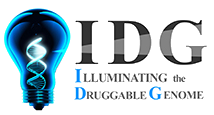Drug results: 27
| acetylsalicylic acid | The prototypical analgesic used in the treatment of mild to moderate pain. It has anti-inflammatory and antipyretic properties and acts as an inhibitor of cyclooxygenase which results in the inhibition of the biosynthesis of prostaglandins. Aspirin also inhibits platelet aggregation and is used in the prevention of arterial and venous thrombosis. (From Martindale, The Extra Pharmacopoeia, 30th ed, p5) |
|
| phenyl acetylsalicylate |
|
|
| caffeine | A methylxanthine naturally occurring in some beverages and also used as a pharmacological agent. Caffeine's most notable pharmacological effect is as a central nervous system stimulant, increasing alertness and producing agitation. It also relaxes SMOOTH MUSCLE, stimulates CARDIAC MUSCLE, stimulates DIURESIS, and appears to be useful in the treatment of some types of headache. Several cellular actions of caffeine have been observed, but it is not entirely clear how each contributes to its pharmacological profile. Among the most important are inhibition of cyclic nucleotide PHOSPHODIESTERASES, antagonism of ADENOSINE RECEPTORS, and modulation of intracellular calcium handling. |
|
| paracetamol | Analgesic antipyretic derivative of acetanilide. It has weak anti-inflammatory properties and is used as a common analgesic, but may cause liver, blood cell, and kidney damage. |
|
| sodium bicarbonate | A white, crystalline powder that is commonly used as a pH buffering agent, an electrolyte replenisher, systemic alkalizer and in topical cleansing solutions. | |
| citric acid | A key intermediate in metabolism. It is an acid compound found in citrus fruits. The salts of citric acid (citrates) can be used as anticoagulants due to their calcium chelating ability. |
|
| chlorphenamine | A histamine H1 antagonist used in allergic reactions, hay fever, rhinitis, urticaria, and asthma. It has also been used in veterinary applications. One of the most widely used of the classical antihistaminics, it generally causes less drowsiness and sedation than PROMETHAZINE. |
|
| phenylephrine | An alpha-1 adrenergic agonist used as a mydriatic, nasal decongestant, and cardiotonic agent. |
|
| butalbital | management of butalbital withdrawal can be simplified by using a phenobarbital-loading protocol; RN given refers to parent cpd |
|
| dipyridamole | A phosphodiesterase inhibitor that blocks uptake and metabolism of adenosine by erythrocytes and vascular endothelial cells. Dipyridamole also potentiates the antiaggregating action of prostacyclin. (From AMA Drug Evaluations Annual, 1994, p752) |
|
| salicylamide |
|
|
| codeine | An opioid analgesic related to MORPHINE but with less potent analgesic properties and mild sedative effects. It also acts centrally to suppress cough. |
|
| diphenhydramine | A histamine H1 antagonist used as an antiemetic, antitussive, for dermatoses and pruritus, for hypersensitivity reactions, as a hypnotic, an antiparkinson, and as an ingredient in common cold preparations. It has some undesired antimuscarinic and sedative effects. |
|
| orphenadrine | A muscarinic antagonist used to treat drug-induced parkinsonism and to relieve pain from muscle spasm. |
|
| omeprazole | A 4-methoxy-3,5-dimethylpyridyl, 5-methoxybenzimidazole derivative of timoprazole that is used in the therapy of STOMACH ULCERS and ZOLLINGER-ELLISON SYNDROME. The drug inhibits an H(+)-K(+)-EXCHANGING ATPASE which is found in GASTRIC PARIETAL CELLS. |
|
| dextromethorphan | Methyl analog of DEXTRORPHAN that shows high affinity binding to several regions of the brain, including the medullary cough center. This compound is an NMDA receptor antagonist (RECEPTORS, N-METHYL-D-ASPARTATE) and acts as a non-competitive channel blocker. It is one of the widely used ANTITUSSIVES, and is also used to study the involvement of glutamate receptors in neurotoxicity. |
|
| doxylamine | Histamine H1 antagonist with pronounced sedative properties. It is used in allergies and as an antitussive, antiemetic, and hypnotic. Doxylamine has also been administered in veterinary applications and was formerly used in PARKINSONISM. |
|
| oxycodone | A semisynthetic derivative of CODEINE. |
|
| carisoprodol | A centrally acting skeletal muscle relaxant whose mechanism of action is not completely understood but may be related to its sedative actions. It is used as an adjunct in the symptomatic treatment of musculoskeletal conditions associated with painful muscle spasm. (From Martindale, The Extra Pharmacopoeia, 30th ed, p1202) |
|
| salicylic acid | A compound obtained from the bark of the white willow and wintergreen leaves. It has bacteriostatic, fungicidal, and keratolytic actions. |
|
| calcium carbonate | Carbonic acid calcium salt (CaCO3). An odorless, tasteless powder or crystal that occurs in nature. It is used therapeutically as a phosphate buffer in hemodialysis patients and as a calcium supplement. | |
| methocarbamol | A centrally acting muscle relaxant whose mode of action has not been established. It is used as an adjunct in the symptomatic treatment of musculoskeletal conditions associated with painful muscle spasm. (From Martindale, The Extra Pharmacopoeia, 30th ed, p1206) |
|
| hydrocodone | Narcotic analgesic related to CODEINE, but more potent and more addicting by weight. It is used also as cough suppressant. |
|
| magnesium oxide | Magnesium oxide (MgO). An inorganic compound that occurs in nature as the mineral periclase. In aqueous media combines quickly with water to form magnesium hydroxide. It is used as an antacid and mild laxative and has many nonmedicinal uses. |
|
| triflusal | inhibits platelet aggregation similarly to aspirin; structure |
|
| guacetisal | tolerated by patients with aspirin-asthma |
|
| diflunisal | A salicylate derivative and anti-inflammatory analgesic with actions and side effects similar to those of ASPIRIN. |
|



